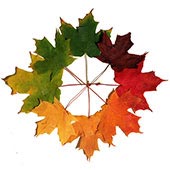O’Connor Juniper – Juniperus virginiana ‘Glauca O’Conneri’
 ‘Glauca O’Conneri’ showing dark green foliage on Christmas day are nearly 50 years old and 20 feet tall
‘Glauca O’Conneri’ showing dark green foliage on Christmas day are nearly 50 years old and 20 feet tall
Native to North America east of the Rocky Mountains, and isolated populations in Oregon, this common tree was revered by Native Americans for its many and varied uses. (1) The O’Connor cultivar is a very long-lived, globe-shaped version. Most online descriptions erroneously attribute a maximum height of 10 feet to this outstanding ornamental landscape specimen.
Description
Juniperus virginiana is a medium-sized dioecious or rarely monoecious tree from 10-20 m (33-66′) tall. The evergreen tree is shaped like a pyramid or column, with reddish-brown to grayish colored bark that is fibrous and shedding. Branches are usually reddish-brown. Leave are opposite, simple, green or blue-green, closely appressed and overlapping the leaf above, scale-like

Red cedar is a pioneer species and often volunteers in old fallow farm fields and waste places. I love volunteers.
Ethnobotanic: The Cheyenne steeped the leaves of the red cedar and drank the resulting tea to relieve persistent coughing (no doubt a result of too many peace-pipes). It was also believed to produce sedative effects that were especially useful for calming a hyperactive person (also good for peace-pipe ceremonies). Cheyenne women drank the red cedar tea to speed delivery during childbirth (Grinnell 1962). The Cheyenne, along with the Flathead, Nez Perce, Kutenai, and Sioux, made a tea from red cedar boughs, branches, and fleshy cones, which they drank for colds, fevers, tonsillitis, and pneumonia (Hart 1976).
As a cure for asthma, the Gros Ventres ate whole red cedar berries or pulverized them and boiled them to make a tea. They also made a preparation from the leaves mixed with the root, which they applied topically to control bleeding (Kroeber 1908). The Crows drank this medicinal tea to check diarrhea and to stop lung or nasal hemorrhage. Crow women drank it after childbirth for cleansing and healing (Hart 1976).
The young leafy twigs of the red cedar were officially listed in the U.S. Pharmacopoeia from 1820 to 1894 as a diuretic (Kindscher 1992). The distilled oil of the red cedar has been officially listed as a reagent in the U.S. Pharmacopoeia since 1916 (ibid.).
*This recitation is made for historical purposes only. Hard data on the efficacy or potential toxicity of any of the treatments are lacking and should be taken with a large grain of salt, figuratively. Anecdotal evidence is no evidence at all, in my opinion. —Ed.
The bark of common juniper is thin, shreddy or scaly, often exfoliating into thin strips.
Wildlife: Red cedar and other junipers are important to wildlife throughout the country. Their twigs and foliage are eaten extensively by hoofed browsers, but the chief attraction to wildlife is the bluish-black berry-like fruit. The cedar waxwing is one of the principal users of red cedar berries, but numerous other birds and mammals, both large and small, make these fruits an important part of their diet. In addition to their wildlife food value, cedars provide important protective and nesting cover. Chipping sparrows, robins, song sparrows, and mockingbirds use these trees as one of their favorite nesting sites. Juncos, myrtle warblers, sparrows of various kinds, and other birds use the dense foliage as roosting cover. In winter, their dense protective shelter is especially valuable.
The wood of red cedar is very durable, and was used for lance shafts, bows, and other items. Flutes made from red cedar wood were highly regarded by the Cheyenne. Cedar boughs were used for bedding. The Menomini wove mats of cedar bark. The mats were used for roofing temporary structures, for partitions, floor mats and wrappings, and for various purposes in the canoes.
Ornamental: Seedlings of red cedar are ordinarily used as stock for grafting ornamental juniper clones. Red cedars are often used as ornamentals for their evergreen foliage. Most cemetery plantings include old red cedar trees and many younger dwarf junipers. All of the native junipers are valuable ornamental species, and many horticultural varieties have been developed. Red cedar is widely used in shelterbelts and wildlife plantings. The close-grained, aromatic, and durable wood of junipers is used for furniture, interior paneling, novelties, and fence posts.
References:
1. USDA, ARS, National Genetic Resources Program. Germplasm Resources Information Network
2. Tirmenstein, D. 1999. Juniperus communis. In: Fire Effects Information System
Family Cupressaceae – Redwood, Cypress, Arborvitae, Juniper
Trees Index | Pine Family | Beech, Oak | Nut Trees | Birch Family | Magnolias
Tree Encyclopedia / North American Insects & Spiders is dedicated to providing family-friendly educational
resources for our friends around the world through large images and macro photographs of flora and fauna.
Online since 2002
